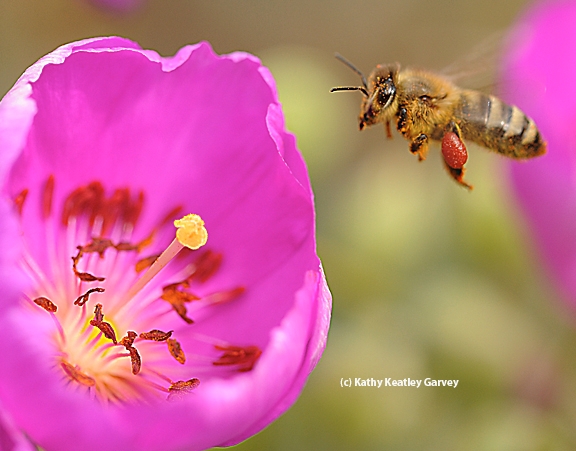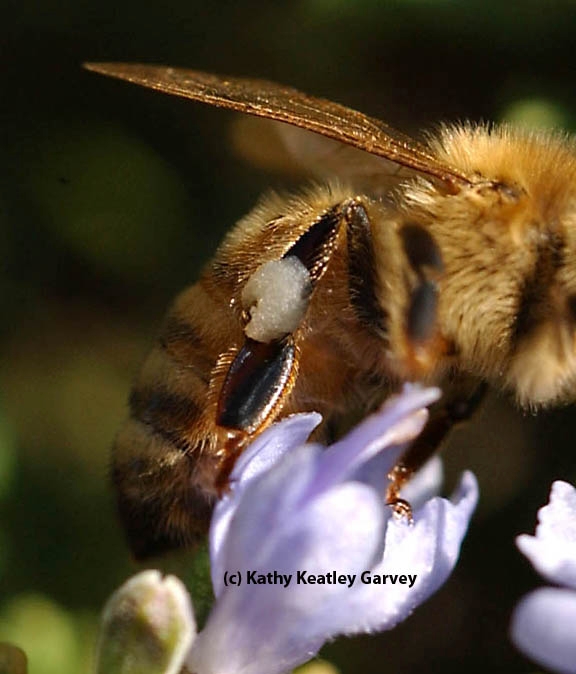It's the Fourth of July--a time to celebrate our nation's Independence Day.
Hurrah for the red, white and blue!
That also covers red, white and blue pollen collected by our honey bees.
If you look closely, you'll see their "patriotic" colors.
"The importance of pollen to the health and vigor of the honey bee colony cannot be overstated," writes emeritus entomology professor Norman Gary of the University of California, Davis, in his best-selling book, "Honey Bee Hobbyist, The Care and Keeping of Bees."
"Honey satisfies the bees' carbohydrate requirements, while all of the other nutrients---minerals, proteins, vitamins and fatty substances--are derived from pollen. Nurse bees consume large amounts of pollen, converting it into nutritious secretions that are fed to developing larvae. During an entire year, a typical bee colony gathers and consumes about 77 pounds of pollen."
Gary adds: "Pollen in the plant world is the equivalent of sperm in the animal world. Fertilization and growth of seeds depends upon the transfer of pollen from the male flower parts (anthers) to the receptive female parts (stigmas)."
Our honey bees are not native to America, but they've been here so long that many people think they are. European colonists brought them here to Jamestown Colony, Virginia, in 1622. Honey bees were established here before our forefathers signed the Declaration of Independence on July 4, 1776.
So, today, a time to celebrate the Fourth and a time to celebrate our honey bees, Apis mellifera.
Attached Images:


